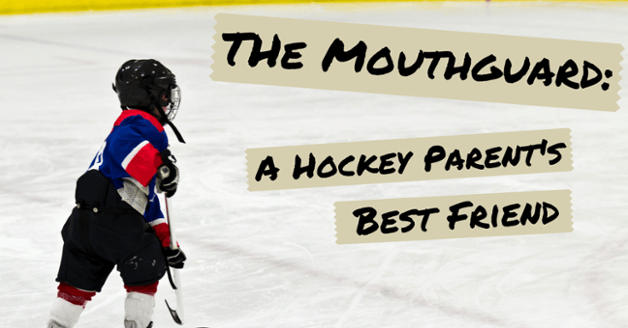Hockey season is in full swing! And for hockey parents everywhere, this means lots and lots of equipment – both new and old. Unfortunately, one of the most important pieces of equipment also happens to be one piece of equipment that’s most often overlooked – the mouthguard!
The Debate: Nuisance or Necessity?
When it comes to Hockey (and most other contact sports) there seems to be a never-ending debate about mouthguards and whether or not they’re a nuisance or a necessity. While not every coach, parent, or player may be swayed, pediatric specialists across the board agree that a mouthguard is a sports necessity.
Pediatric specialists (dental or otherwise) will agree: Athletic mouthguards are a necessity.
There’s no way to deny that when a mouthguard doesn’t fit right it can absolutely feel like a nuisance. An ill-fitted mouthguard can be uncomfortable and awkward to the point where it becomes difficult for a player (be they young or old) to talk, breathe or focus on the game.
That being acknowledged, even the most annoying mouthguard is better than having no mouthguard at all.
So, what’s the best way to help the athlete in your life find the perfect mouthguard? Simple – understand the differences among the types of mouthguards and the pros and cons that come with each.
Understanding the Types of Mouthguards
When it comes to athletic mouthguards there are three major types. We’ve listed them below in order of effectiveness (from most to least) and cost (from highest to lowest):
- Custom-Fitted – Custom-fitted guards are made to fit your teeth perfectly with the help of a tooth impressions taken at your dentist’s office. This type offers the most protection and comfort along with the best fit.
- Boil-and-Bit – These “Do It Yourself” guards offer a more customized fit than stock guards, but can still be cumbersome. This type of guard can only stay in place if the mouth is closed – which can make breathing difficult and talking near impossible.
- Stock – Ready to use straight from the packaging, a stock mouthguard isbetter than no mouthguard. That being said, stock guards are usually the most difficult to wear and encounter
The Value of a Good Fit
When it comes to finding the best mouthguard for the hockey player in your life, it’s all about finding the right fit. A mouthguard that fits properly is a mouthguard that can offer the most protection against cracked teeth, broken jaws, and even concussions while allowing a player room to play. Finding a good mouthguard that fits properly is the best way to help the hockey player in your life stay safe and play at their best.



